This largest ever offered collection of WECA comics keeps on rolling out from out of the Land Beyond the Mists (we may never find out the source of this collection because Jon Signorelli tells me that the owner wants to remain completely anonymous). It continues to shake up price points and demands some adjustment to our WECA comics price guide (but nothing drastic because remember, our price guide is first and foremost a detailed and comprehensive checklist of these 760 books or so and only secondarily a pricing ‘bible.’). Let’s see what we can take away from these latest results from the auction which ended on Oct. 27. There were 32 WECA books on offer bringing this year’s total on ComicLink to 128 so far and I can see from the ComicLink Fall Preview Auction that we’re not done. Here is the full table from this auction in descending price order:
| Wow 18 | 2.5 | $3,600 |
| Commando 1 | 0.5R | $3,000 |
| Triumph-Adv. 4 | 0.5 | $2,600 |
| Wow 17 | 2.5 | $2,400 |
| Robin Hood V1 N5 | 5.5 | $1,799 |
| Commando 3 | 5Q | $1,400 |
| Triumph 8 | 0.5 | $1,400 |
| Bing Bang V5 N4 | 2 | $1,049 |
| Triumph 9 | 0.5 | $1,049 |
| Triumph 15 | 0.5 | $1,049 |
| Three Aces V1 N6 | 3.5 | $1,003 |
| Three Aces V1 N8 | 3.5 | $1,000 |
| Wow 19 | 2.5 | $800 |
| Freelance V1 N6 | 2.5 | $625 |
| Tang compendium nn | 3 | $600 |
| Active 21 | 3 | $590 |
| Better V2 N4 | 2.5 | $458 |
| Freelance 32 | 8.5 | $425 |
| Active 3 | 0.5 | $400 |
| Whiz/Spy Smasher V4 N12 | 5 | $326 |
| Freelance V1 N10 | 3 | $325 |
| Can. Heroes V2 N3 | 3 | $230 |
| Weekender 4 | 1.5 | $224 |
| Can. Heroes V3 N1 | 4 | $219 |
| Commando 11 | 0.5 | $219 |
| Spy Smasher V4 N8 | 4.5 | $200 |
| Whiz/Spy Smasher V4 N6 | 4.5 | $186 |
| Lucky V5 N3 | 0.5 | $170 |
| Spy Smasher V1 N9 | 3.5 | $165 |
| Capt. Marvel V2 N12 | 1 | $110 |
| Capt. Marvel V3 N8 | 2 | $110 |
| Freelance 31 | 5 | $83 |
So here we go. Let’s look at the top price getter. Wow 18 is THE classic Dingle Penguin cover and probably one of the harder issues of the run to find. This copy is notable because of the colour difference to most other copies. My own copy and the Library and Archives copy are two-colour red and yellow covers while this one is a two-colour red and blue copy. Maybe Bell ran out of yellow towards the end of the run and substituted red. Are key Bells such as this from now on going to settle at around $3000 at the 2.0 level?
The next book was a restored Commando 1, another Bell book that is relatively hard to find. The grade was a purple (C-2) 0.5 because of tape, staple replacement and the attachment of the wrong back cover but it still fetched 3 grand. The popularity of Bell’s full war title with it’s great WW II soldier covers proved its force in the last ComicLink auction and has extended to the Commando 3, a qualified 5.0 with a coupon cut from the back cover. Even the incomplete Commando 11 got over $200 which was probably the base for a 2.0 Bell run comic a year or two ago.
The 0.5 Triumph-Adventure 4 got $2600. These Hillborough issues are extremely difficult to find and make me think of the usefulness of putting together a WECA comic registry for the rare, hard-to-find issues so that we can better understand and estimate how many copies of these issues actually exist and are in collections. But this issue does have an early Nelvana story in it and a great Andre Kulbach cover.
Any 1941 and, to a slightly lesser extent, any 1942 WECA books are extremely desirable and you really can’t go wrong picking them up. A good example is the Robin Hood Comics Vol. 1 No. 5 which graded at a 5.5 even though it had some sort of pin holes punched through the entire book. The first year of Robin Hood Comics consisted of individual issues that were cobbled together from the Toronto Telegram dailies with panels being cut up so that there were six panels to a page and one continuous story through the book. The first five issues of these had covers that featured cut-up daily panels along with the Robin Hood masthead and no real central graphic or image. I think that these early Robin Hoods have a neat, old fashioned, almost manuscript look to them. Again, they are hard to locate and are worth picking up when you can.
Three Triumphs, 8, 9, and 15 (all 0.5s) also made the top 10. 8 and 15 were incomplete, while 9 was a water-damaged and soiled copy. Bell Triumphs are in demand, of course, because of the Nelvana stories and covers and each of these fetched over a grand for poor condition copies.
A later Bing Bang with a Canadian paratrooper cover (Vol. 5 No. 4) in 2.0 reached $1049. Bing Bangs, I think, are among the scarcest of the Maple Leaf comics and this one with a war cover certainly made a statement.
The last two comics to round out the top twelve books from this auction were two early Anglos, Three Aces Vol. 1 No. 6 (which is really No. 5) and Vol. 1 No.8 both in 3.5 and they both broke the $1000 barrier. I think that these early Three Aces, before the decision to go in the direction of the Fawcett character redraws (in the case of Three Aces, Bulletman redraws) in early 1943, are a rich trove of original Canadian characters with some great two-colour covers and are worth the money (I only wish I had it).
It looks to me like a market still trying to find a footing on solid ground and the question is how far above sea level this will be. But you can’t deny that there’s something special about these books and by owning one or more of them in your collection you know you’ve got a rare and special part of Canada that most American collectors just wouldn’t appreciate in the same way. It’s still part of the hobby or pastime, or whatever we call it, that we know as comic book collecting but this time it involves the added elegance of something which we can distinctly call our own and doesn’t belong to or emanate from the American juggernaut. Sure, speculators, and a few of these might be Americans, may jump in to get on a profit minded ride, but these Canadian war-time comics do feel magical when you hold one in your hands. In comic book collecting there’s always the magic of finding those books from your childhood, or finally finding that elusive first issue or book that completes a run on a dealer’s wall or in a long box, or even coming across some obscure golden age gem you thought you’d never see. But collecting war-time Canadian comics is a marvelous road less travelled that eventually gets you back home to some things you didn’t even know belonged to you.
As exciting as the past four ComicLink auctions have been in terms of WECA book results, the most exciting act is just around the corner. The Fall Preview Auction, which begins on Nov. 17, is offering a couple dozen more WECA comics, but what comics they will be! There will be 5 first issues that should produce crazy results because it’s safe to say that there are fewer than 8-10 (if that many) of these in existence.
The first is Canadian Heroes Vol. 1 No. 1 at a solid 5.0. This is the first war-time comic published in Montreal and the first Educational Projects book.
The second is a Three Aces Vol. 1 No. 1 at a 3.0 that looks way better. This was the last of the first four original Anglo-American titles coming out just at the end of 1941 and is an extremely hard book to locate.
The next (and I assume I’m presenting them in order of the prices they will achieve from lowest to highest) is Bell Feature’s Joke Comics No. 1 at a 2.5. All other copies I’ve seen of this, including the Library and Archives copy, have a small yellow 10 cent paste-it note type sticker, just big enough to cover that original 25 cent price tag. Perhaps this one was carefully removed or never had one. The speculation is that Bell originally intended this book to sell at 25 cents but changed his mind as it was ready to go out to the stands and place these 10 cent stickers over the original price. The book is notable for the1st appearance of Ted Steele’s Pvt. Stuff as well as the 1st appearance of Spike and Mike who were created by John O’Henly and later taken over by Ross Saakel but, most importantly, this book contains the first full story in comics by Mel Crawford with his “The Three T’s.” Mel, of course, went on to become a much bigger phenomenon south of the border during the 1950s and on.
The fourth book is Maple Leaf’s Lucky Comics Vol. 1 No. 1 at 3.0. This book is notable as Canada’s fourth comic book title, coming out just before Triumph-Adventure No. 1. It features the 1st appearance of Ernie Walker’s “Peter and Peggy in the Haunted Castle,” “Wings over Lion’s Gate” and most notably the 1st appearance of Phil Dauntless in Bert Bushell’s “Ether Escapades.” Phil becomes The Black Wing and gets a cover in issue 10 of the title.
But the big cheese of this whole auction for WECA collectors will be the offering of the heretofore mythical Robin Hood Comics Vol. 1 No. 1.
I, myself, have never seen a copy of this book before and I haven’t come across a collector who has. It’s tied for the first Canadian comic book prize along with Better Comics Vol. 1 No. 1 because they both have cover dates of March 1941, but we usually concede the honour to Better No. 1 because it looked like a comic and the other was a folded tabloid-sized newspaper and because, as I’ve said, nobody had ever seen a copy before. Because of its tabloid size, the book has not been slabbed and the folds are evident, as well as the presence of some tape. Its contents are the dailies that appeared in the Toronto Evening Telegram a couple of years ago. I believe it is the only known copy and maybe the only copy that ever surfaces and if someone can get this into their collection, then you’ve really got something. For these reasons, I think that this book will achieve the highest known auction price ever for a Canadian comic and there may be some American pockets that open up for this one. Start organizing your funds now if you plan to go for this one, I can’t wait to see what kind of fireworks happen. (The slabbed 2nd and 3rd issues of this title are also on offer in this auction.)
Also on offer over at Heritage is the Captain America 128 pg Annual at 1.0. This book does appear in Overstreet and is called a Canadian book mainly because the interior is black and white, but I’m not so sure that it was printed in Canada or even distributed in Canada. The CGC blue label doesn’t say that it is a Canadian comic. We’ll figure this book out someday.
Lastly, just a quick announcement that Hope Nicholson and Bedside Press are putting out a reprint of Ross Mendes’ Polka Dot Pirate Stories and it should hit stands this month. What I’ve seen looks great and I hope everybody will pick up a copy. Bedside is also close to finishing a reprint of Wow Comics No. 1 thanks to Jim Finlay’s efforts in scanning his copy. That should be a treat too when it comes out.

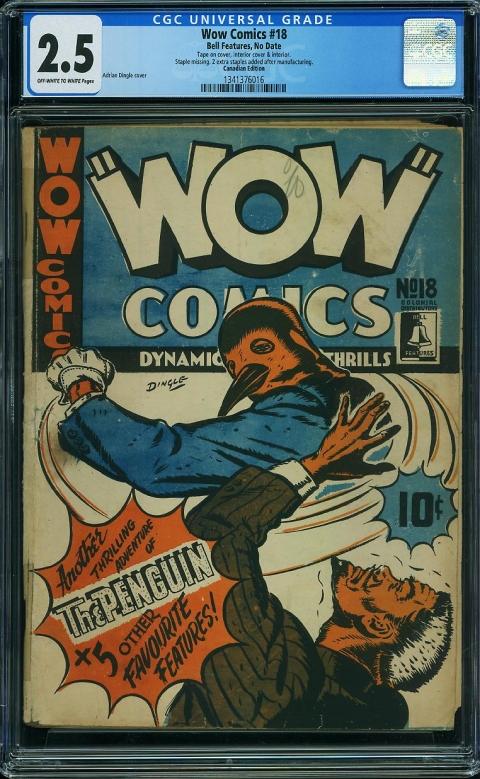
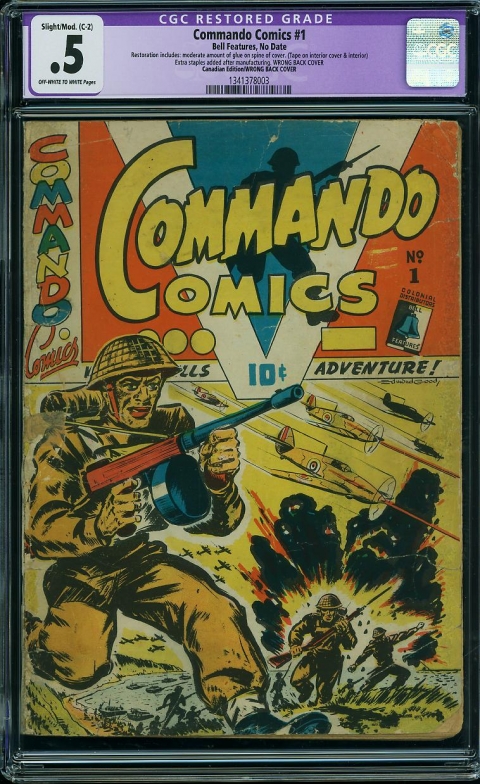
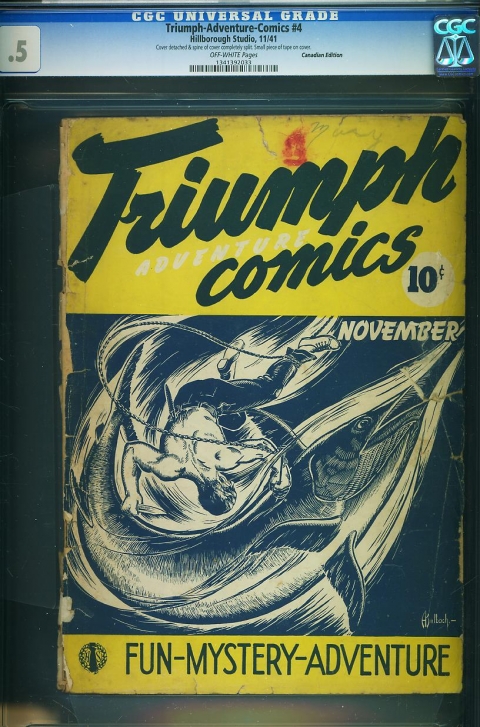
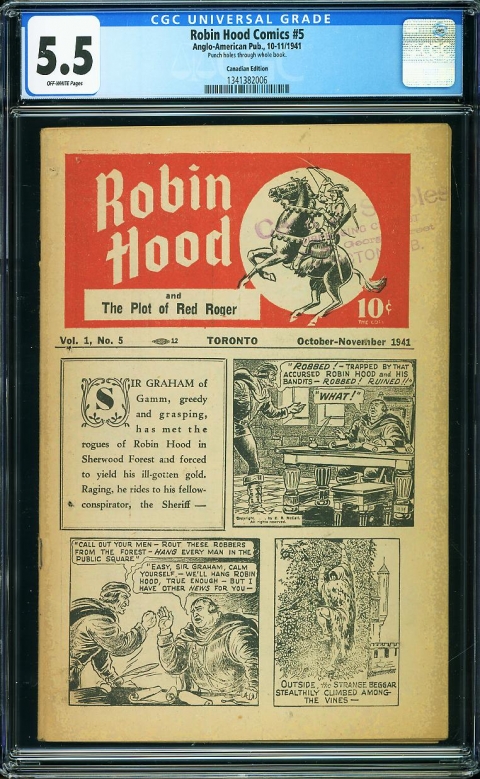
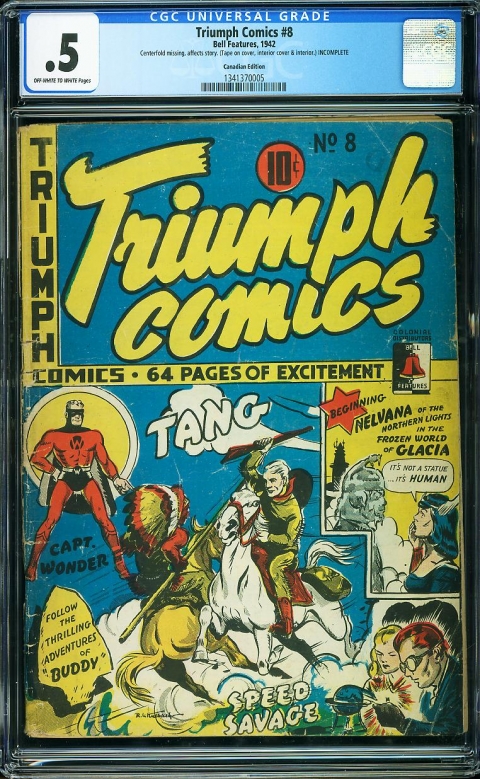
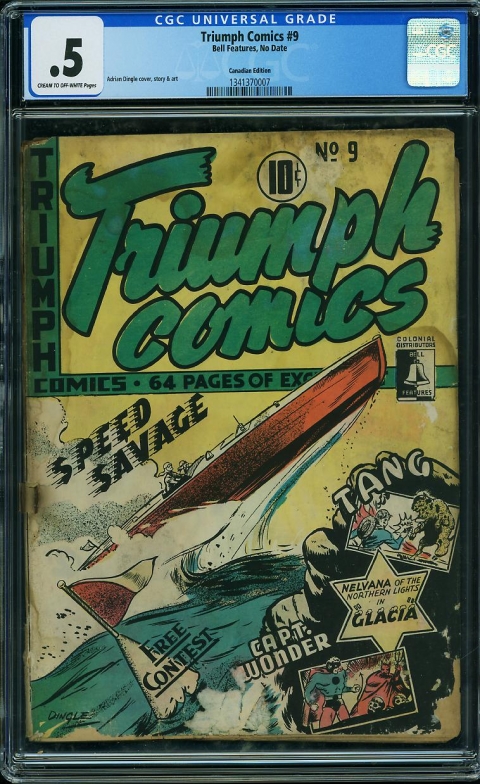
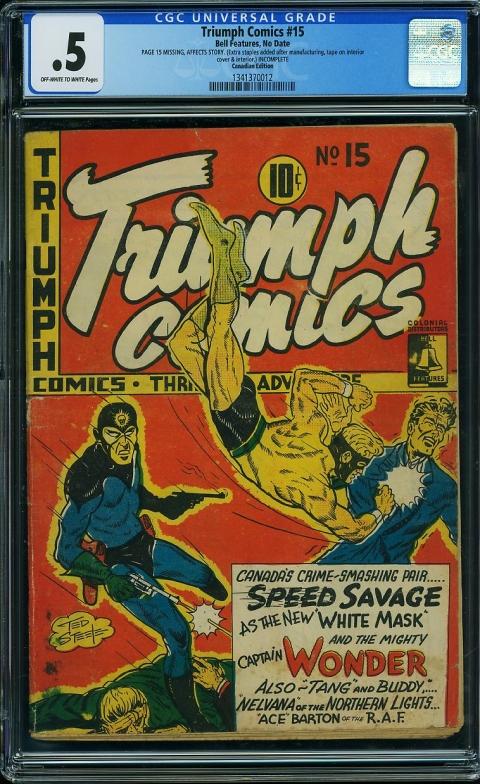
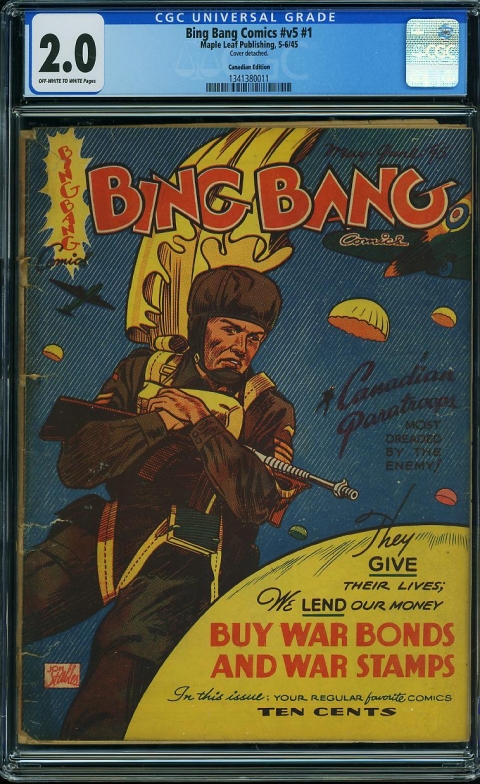
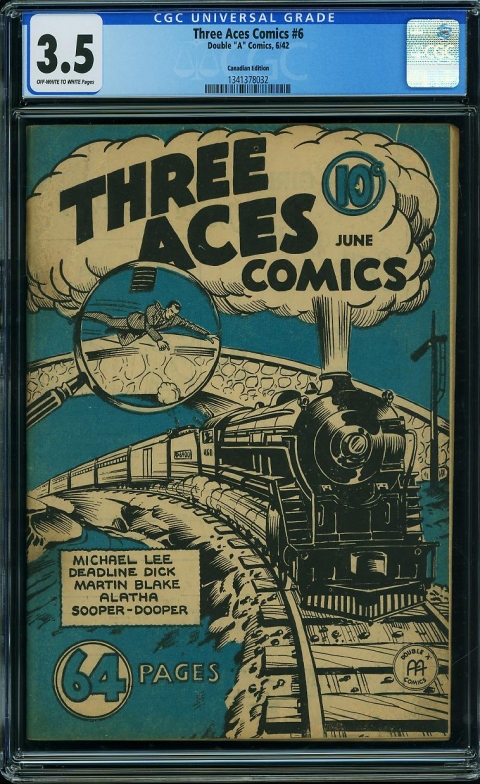
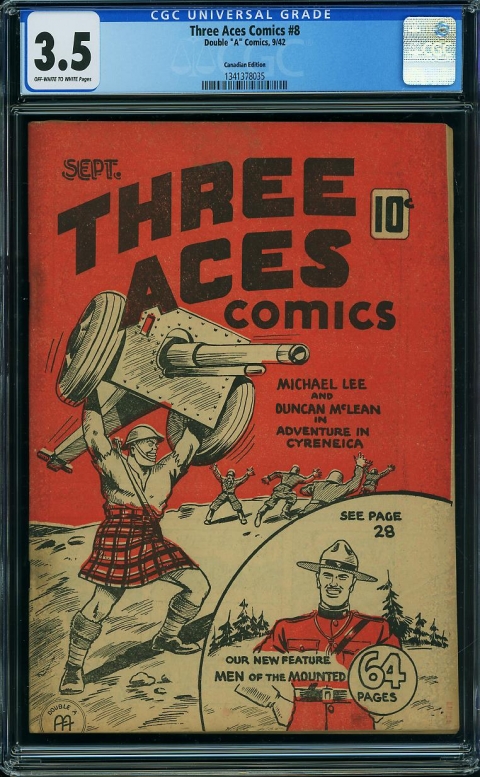
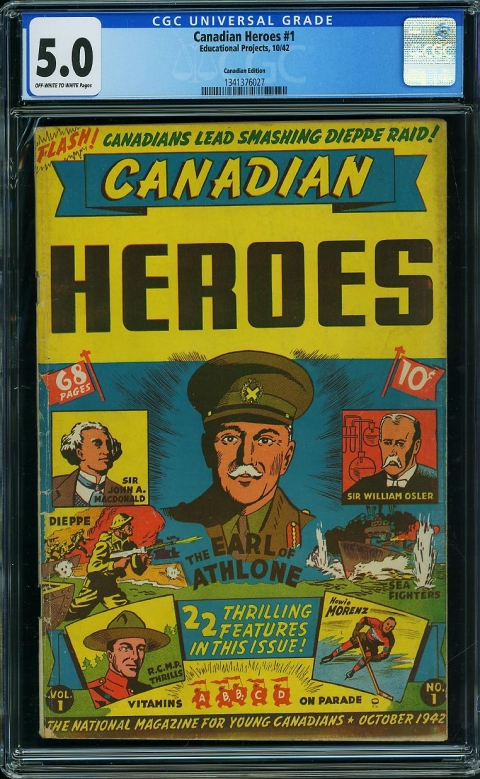
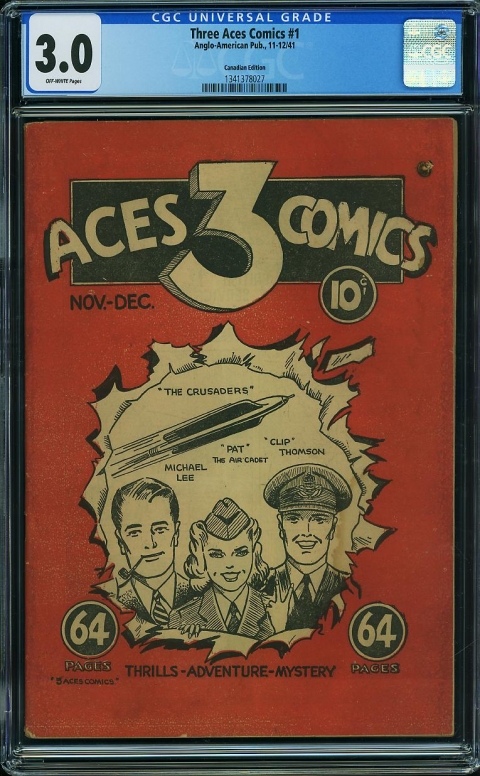
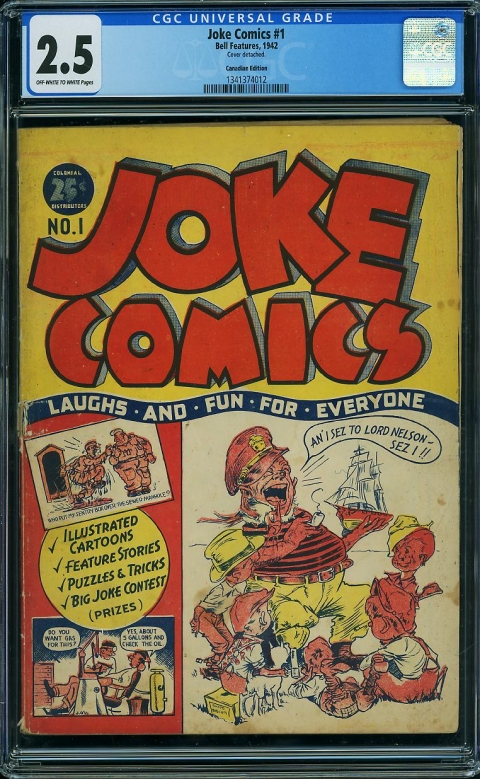
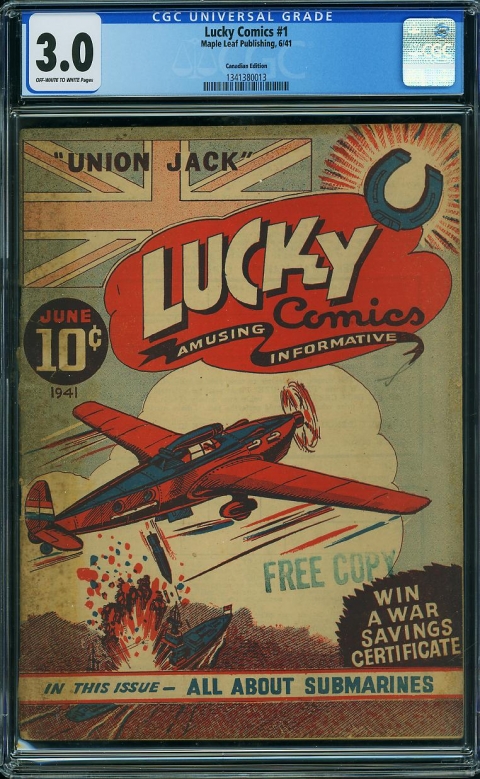
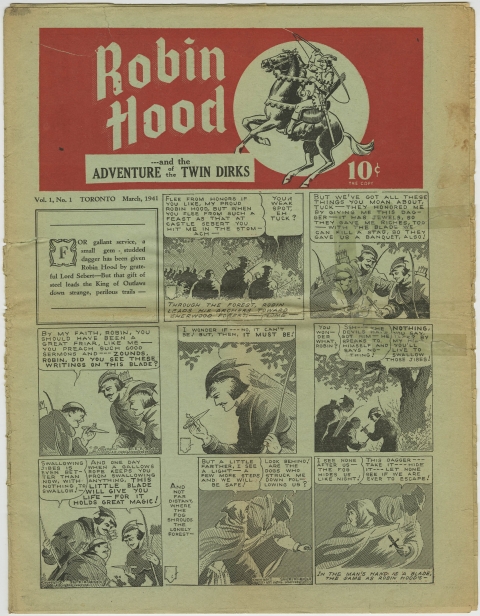
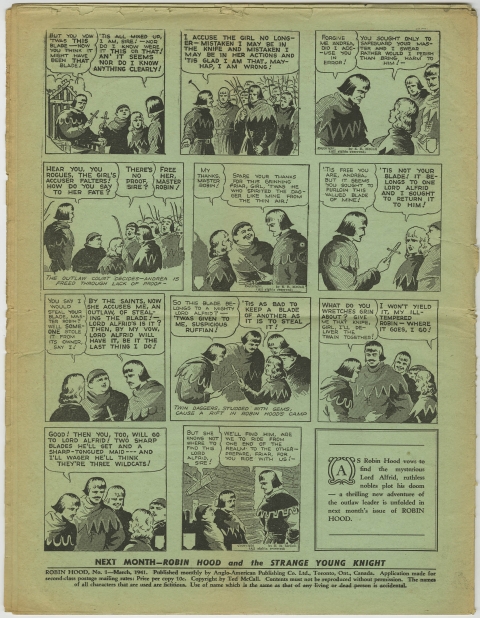

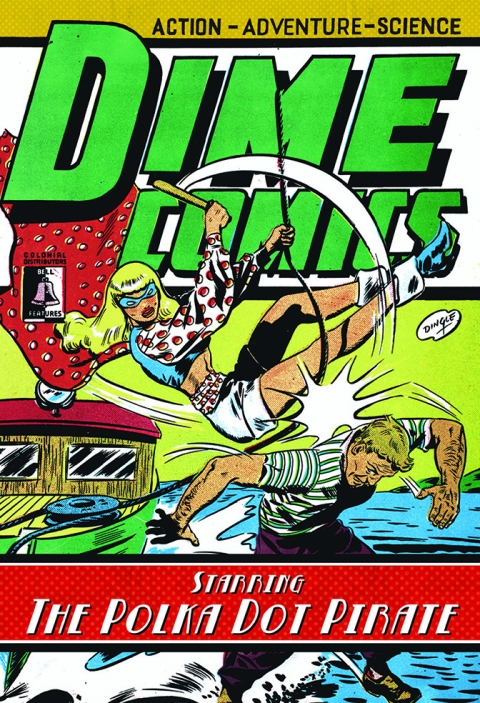
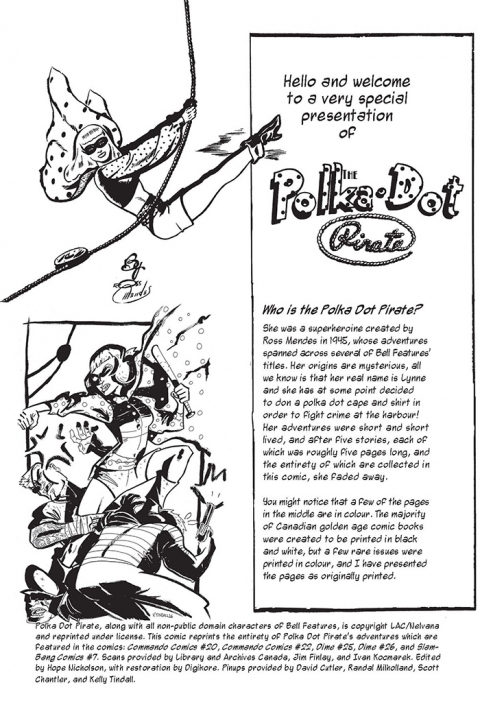



Wonderful, thorough coverage. I don’t keep up with ComicLink, so all this is all news and I love the issue by issue analysis.
Also gratified to see a few issues down in the under $500 range, maybe there’s hope I can pick up something once in a while.
Last week I attended the OAF-Con in Oklahoma City, the perfect good-old-by vintage show. I also went through Bedrock City’s entire stock in Houston…not a WECA issue to be found this time around. I scored two at OAF last year–or maybe it was two years ago.
Great to hear from you again, Bud and glad to see that you’re still interested in these old Canadian books. I don’t know where these prices will level off eventually but I was priced out of the quality books a year ago. I think most of the WECA books that show up at American cons must do so at the ones held in the border states because I think only a handful of the later colour Anglos that were printed in Cleveland in 1946 were the only books distributed below the border. Also some of the 1947 F. E. Howard books such as Super Duper 3 and the Dizzy Dons were. I also wonder if Florida could be a source of some of these books because some Canadian families must have wintered down there?
Must admit I haven’t thought about this enough either, but you make a pretty good point… the main point (well, much of the point) of the law as applied to periodicals was to keep the plates from moving around. We know that Victor Fox seems to have slipped some through within the early days of the law, but… are there any later, verified examples of that?
Can you clarify your question a little? Mark. I’m not sure what you are asking about.
Hello Ivan — Ah yeah, sorry… regarding the Cap Annual: Somehow it’s never occurred to me to question this, but I think you imply a point well worth studying. The language of the law says the cut-off date is “three months prior to Dec 1 1940,” and I think you’ve said in a previous post that everything had been rolled back by the end of 1946.
And we know they were targeting printed matter, AND plates, film negatives (from which plates can be made), and art. But we also know that Victor Fox somehow slipped plates (most likely plates) across the border after the start date. Feels like he probably got caught or he’d have done more.
I guess my question is, are there any other obvious examples of what Fox did there?
The follow up to that would be — is there anything fixing the Marvel and Cap annuals firmly in 1942, aside from the material included? Could they plausibly have been published after 1946?
(and, hm… what do the US copyright books say, if anything? I will look at that later)
In any case, good stuff and I enjoy reading about it, thank you.
Yes there were those 4 Fox titles Big 3 No. 2, Fantastic No. 16, Weird No, 12, and Mystery Men No. 20 that were published in black and white by Anglo-American in 1941, I don’t think there is anything else like that though American comics printed in Canada such as Exciting Comics, seemed to start appearing on the stands in early 1945 before the bans were officially lifted. Certain American books that were deemed to be of educational value such as the Parents Magazine Press comics like True Aviation Picture Stories and True Comics (which actually had its title changed to True Picture Magazine for the Canadian market actually did appear on Canadian newsstands. Books like these and Classics Comics could be subscribed to from Canada. But the Cap Annual doesn’t fall into this category. What would help with the Cap and Marvel Mystery Annuals would be to find out why they were printed in black-and-white and where all the copies that have so far turned up originally found. If all the copies have been found in Canada, it would be a case for the book being published in Canada mainly for the Canadian market. Also, are there indicia in these annuals? I’m not aware of anything that would put the book in 1945 or 46. I wonder if the Marvel/Timely archives could shed any light on this?
Hey Ivan
In partial answer to your questions, there is a Captain America of 128 pages (they don’t count the cover in the page count) listed on Heritage Auctions’ site that notes it was copyrighted by Universal Crime Stories Inc. in 1942. I tracked this company down to 366 Madison Avenue in New York. So, you see lads? Not a Canadian comic at all.
Mel — Well, I did go so far as to check the ’42 US periodical copyright books, and the Cap is not in there. Haven’t played it forward though subsequent years yet.
The thing is, I don’t think the indicias necessarily tell us much here. The theory would be that either the plates or the printed comics themselves (more likely the plates, I’d suppose, but…) slipped across the border, and were not modified when they got there.
Interesting (Marvel) mystery, though…
It could also be that, because Universal Crime Stories Inc. published primarily pulp mags, they relied heavily on black and white printing and just carried that over into a one-shot comic reprinting Timely material. Most of the Canadian reprints of American books actually do have the indicia altered, and, in some cases, the ads either removed or replaced with Canadian ads. Even if these plates crossed the border, I’m not sure they would have neglected to change the indicia. Another interesting question is what the heck was an American company doing reprinting timely comics when Timely was still in the business of printing their own?
Great extensions to this controversy Mel and Mark. Thanks for taking the time to look into this murky problem. I hope somebody eventually has the time and energy and resources to provide a final answer for it.
Mel — that’s a really good point re pulp publisher and the b&w angle. I think some have interpreted this company as one of the many Goodman shell companies, but it’s best never to assume in this stuff!
Ivan — You blew my mind with your off-hand comment about True Comics. Little known, but George Hecht (the publisher) was a comic/cartoon censorship figure from WAY back here. Was head of the govt’s “Bureau of Cartoons” in WWI (I know of one instance where cartoonists were tried under sedition and espionage laws… for political cartoons!), and more famously started banging the drums during the SOTI era in Parent’s Magazine.
Color me NOT SURPRISED that he was taking advantage of being able to get comics into Canada while helping to create an atmosphere that prevented others from doing so. Amazing little bit of undiscovered history.